Search Result
Results for "
TNF-alpha-IN-1
" in MedChemExpress (MCE) Product Catalog:
1
Isotope-Labeled Compounds
| Cat. No. |
Product Name |
Target |
Research Areas |
Chemical Structure |
-
- HY-112275
-
-
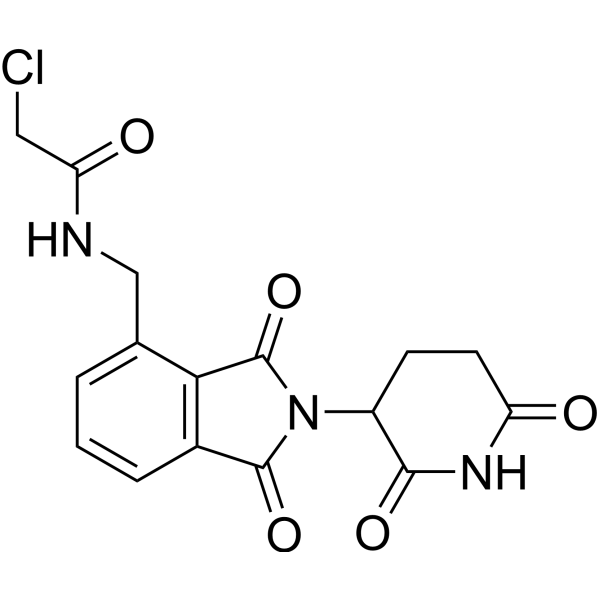
-
- HY-118694
-
-
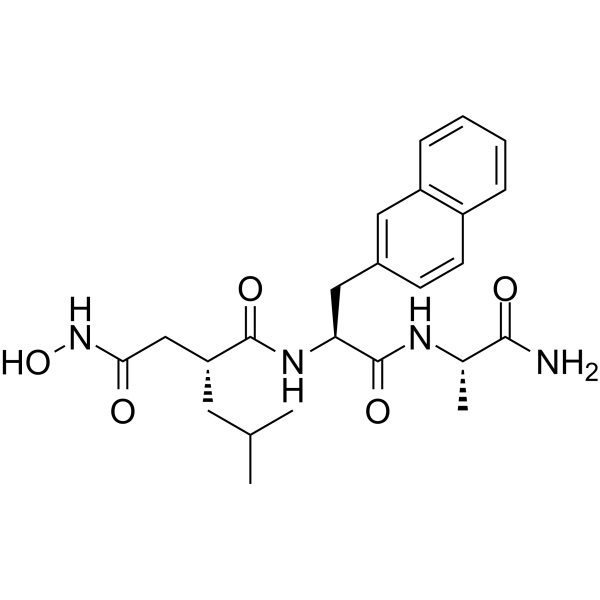
-
- HY-101041
-
|
(E)-TyrphostIN AG 556
|
|
|
|
(E)-AG 556 is a highly selective EGFR inhibitor and also blocks LPS-induced TNF-α production .
|
-

-
- HY-N0358
-
-
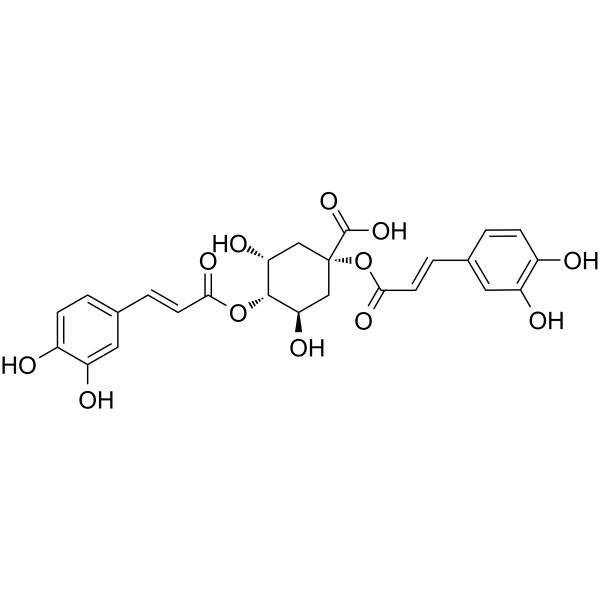
-
- HY-160027
-
|
|
TNF Receptor
|
Inflammation/Immunology
|
|
TNF-alpha-IN-1 (compound 202) is an orally active inhibitor of TNF-alpha. TNF-alpha-IN-1 has anti-inflammatory activity which can used in study rheumatoid arthritis, psoriasis, and asthma .
|
-
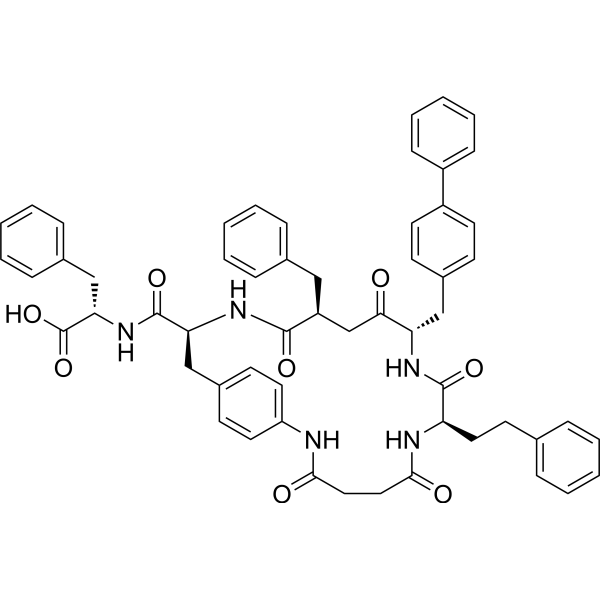
-
- HY-N9315
-
-
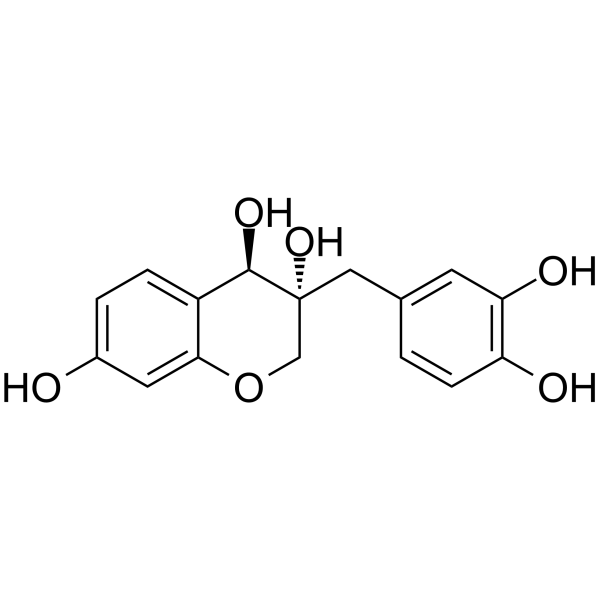
-
- HY-126414
-
|
|
Others
|
Inflammation/Immunology
|
|
Methylenedihydrotanshinquinone is a natural product that can be isolated from the dried root of S. miltiorrhiza. Methylenedihydrotanshinquinone has anti-inflammatory effect by inhibiting expression of TNF-α, IL-1β, and IL-8 .
|
-
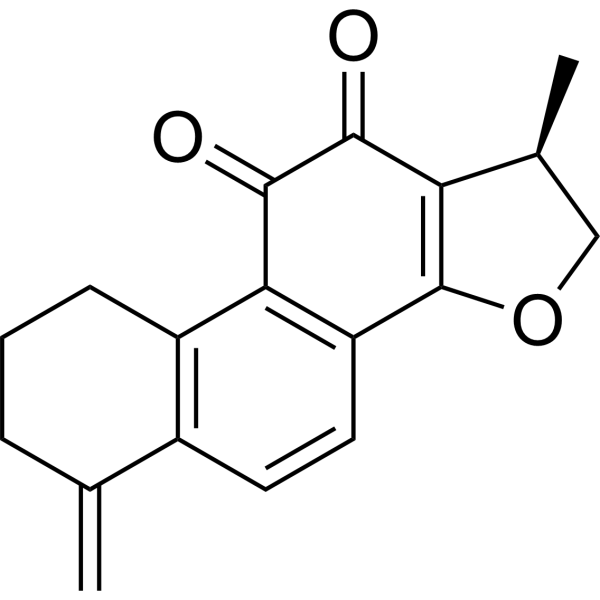
-
- HY-126114
-
|
|
COX
Interleukin Related
|
Inflammation/Immunology
|
|
Lupeol acetate, a derivative of Lupeol, suppresses the progression of rheumatoid arthritis (RA) by inhibiting the activation of macrophages and osteoclastogenesis through downregulations of TNF-α, IL-1β, MCP-1, COX-2, VEGF and granzyme B .
|
-
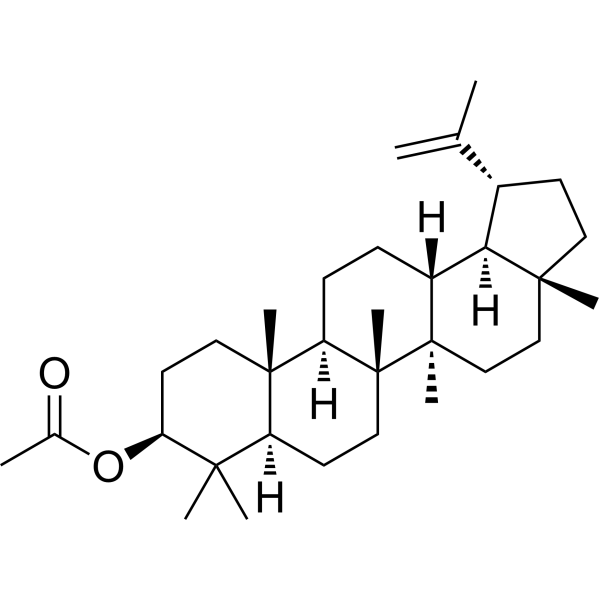
-
- HY-N3552
-
|
|
NF-κB
|
Inflammation/Immunology
|
|
Catalposide, an iridoid glycoside that could be isolated from Catalpa ovate G. Don (Bignoniaceae), inhibits TNF-α, IL-1β, and IL-6 productions and NF-κB (p65) activation in lipopolysaccharide-activated RAW 264.7 macrophages .
|
-
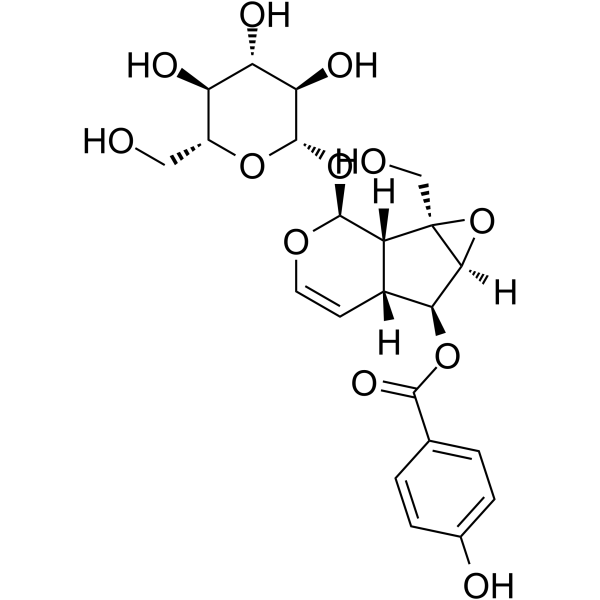
-
- HY-N0569
-
-

-
- HY-134950
-
|
|
TNF Receptor
|
Inflammation/Immunology
|
|
(E)-C-HDMAPP ammonium, is a potent phosphoantigen in ammonium form as well as a pyrophosphonate form of (E)-HDMAPP. (E)-C-HDMAPP is also an effective activator of γδ-T cells, induces T-cell stimulatory responses in vitro (EC50=0.91 nM for TNF-α release) .
|
-

-
- HY-156060
-
|
|
Toll-like Receptor (TLR)
|
Inflammation/Immunology
|
|
NCI126224 is a TLR4 signaling inhibitor. NCI126224 suppress LPS (HY-D1056)-induced production of NF-κB, TNF-α, IL-1β, and NO in the nanomolar-low micromolar range. NCI126224 can be used for the research of inflammatory diseases .
|
-
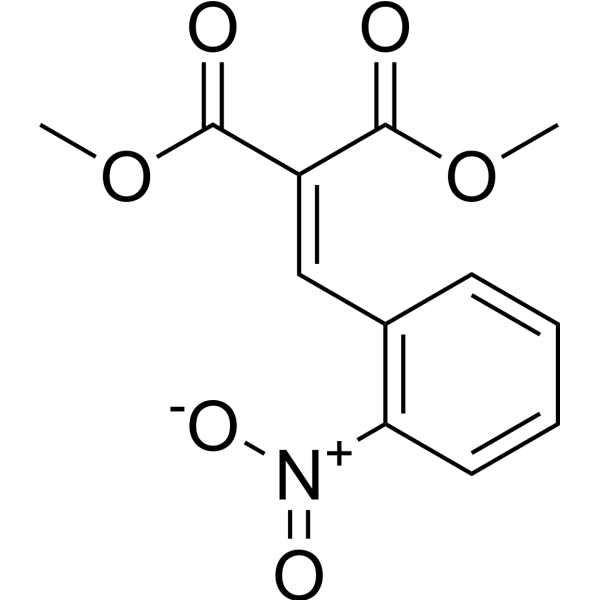
-
- HY-W010201
-
|
(±)-Citronellol; (±)-β-Citronellol
|
Reactive Oxygen Species
|
Cancer
|
|
Citronellol ((±)-Citronellol) is a monoterpene Pelargonium graveolens. Citronellol ((±)-Citronellol) induces necroptosis of cancer cell via up-regulating TNF-α, RIP1/RIP3 activities, down-regulating caspase-3/caspase-8 activities and increasing ROS (reactive oxygen species) accumulation .
|
-
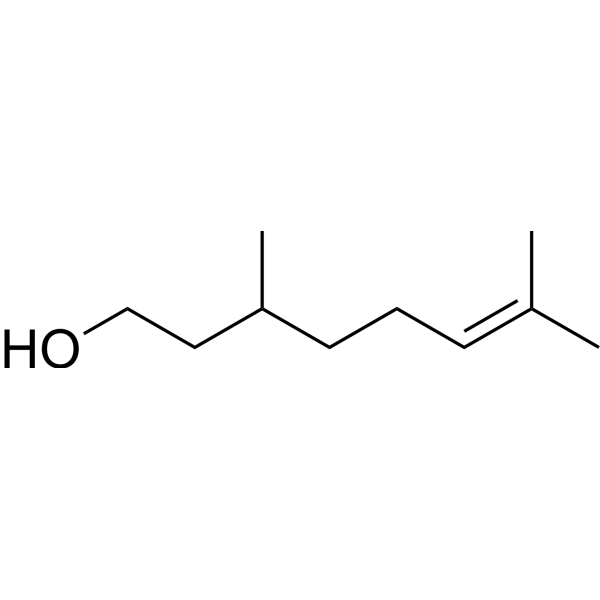
-
- HY-N6927
-
|
Coleonol B
|
TNF Receptor
Interleukin Related
|
Inflammation/Immunology
|
|
Isoforskolin is the principle active component of C. forskohlii native to China. Isoforskolin reduces the secretion of lipopolysaccharide (LPS)-induced cytokines, namely TNF-α, IL-1β, IL-6 and IL-8, in human mononuclear leukocytes. Isoforskolin acts as an anti-inflammatory agent for the treatment of Lyme arthritis .
|
-

-
- HY-N1940
-
|
|
|
|
|
β-Anhydroicaritin is isolated from Boswellia carterii Birdware, has important biological and pharmacological effects, such as antiosteoporosis, estrogen regulation and antitumor properties . β-Anhydroicaritin ameliorates the degradation of periodontal tissue and inhibits the synthesis and secretion of TNF-α and MMP-3 in diabetic rats . β-Anhydroicaritin decreases the overproduction of NO, IL-10, TNF-α, MCP-1 and IL-6 in inperitonitis mice. β-Anhydroicaritin inhibits the elevation of intracellular Ca 2+, and markedly decreases iNOS protein expression .
|
-
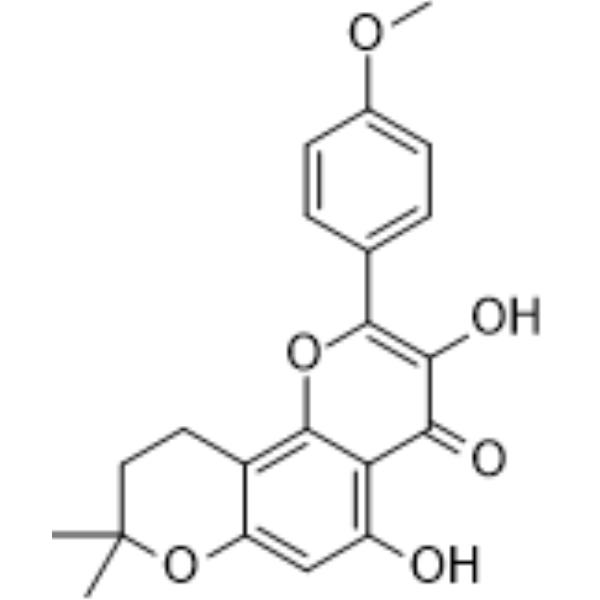
-
- HY-15507
-
|
GIT 27
|
Interleukin Related
TNF Receptor
|
Metabolic Disease
Inflammation/Immunology
|
|
VGX-1027 is an orally active isoxazole compound that exhibits various immunomodulatory properties. VGX-1027 targets macrophages, reducing the production of the proinflammatory mediators TNF-α, IL-1β, IL-10. VGX-1027 has antidiabetogenic effects by limiting cytokine-mediated immunoinflammatory events .
|
-
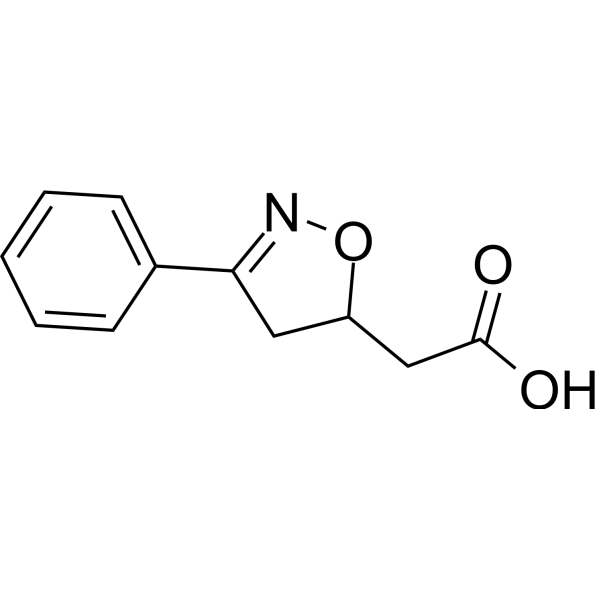
-
- HY-151188
-
|
|
NO Synthase
TNF Receptor
|
Inflammation/Immunology
|
|
DHU-Se1 is a potent anti-inflammatory agent. DHU-Se1 can stimulate macrophages to release the reactive selenium compound and reduce the expression of cellular inflammatory factors (eg: iNOS and TNF-α). DHU-Se1 alleviate the process of inflammation by blocking the polarization of macrophages from M0 to M1 .
|
-
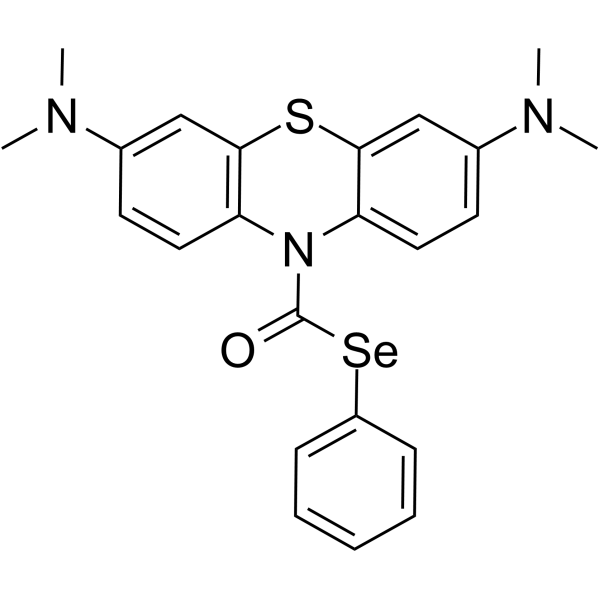
-
- HY-N12042
-
-
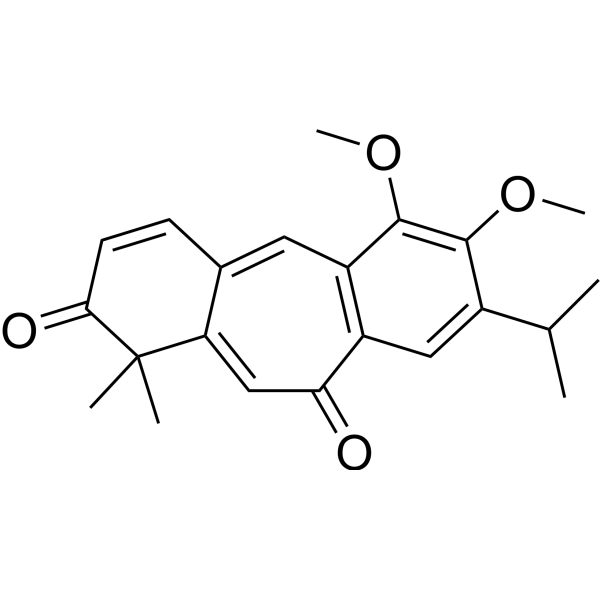
-
- HY-B0446
-
|
NaphthazolINe hydrochloride
|
Adrenergic Receptor
TNF Receptor
Interleukin Related
VEGFR
|
Cardiovascular Disease
Inflammation/Immunology
|
|
Naphazoline (Naphthazoline) hydrochloride is a potent α-adrenergic receptor agonist. Naphazoline hydrochloride reduces vascular hyperpermeability and promotes vasoconstriction. Naphazoline hydrochloride reduces the levels of inflammatory factors (TNF-α, IL-1β and IL-6), cytokines (IFN-γ and IL-4), IgE, GMCSF, and NGF。Naphazoline hydrochloride can be used for non-bacterial conjunctivitis research .
|
-
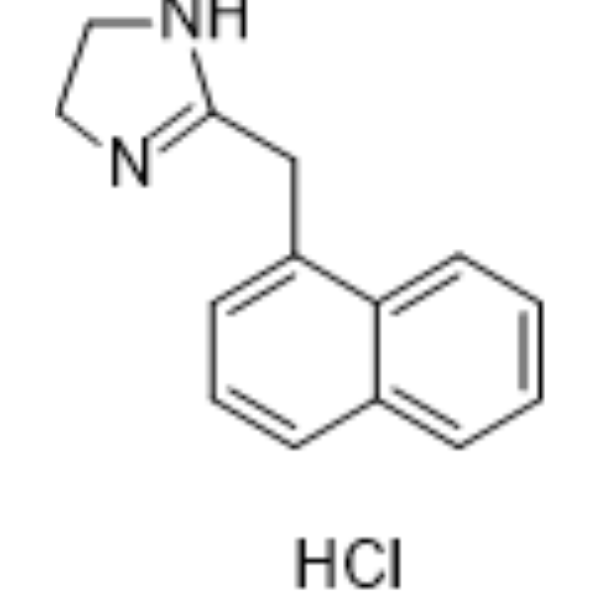
-
- HY-147697
-
|
|
Histone Demethylase
TNF Receptor
|
Inflammation/Immunology
Cancer
|
|
LSD1-IN-21 (compound 5a) is a potent and BBB-penetrated LSD1 (Lysine specific demethylase-1) inhibitor, with an IC50 of 0.956 µM. LSD1-IN-21 significantly reduces the pro-inflammatory cytokine TNF-α. LSD1-IN-21 shows good anticancer and anti-inflammatory activity .
|
-
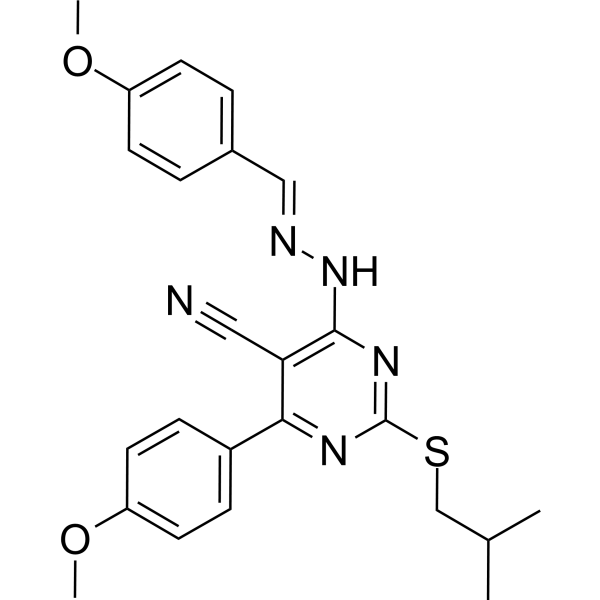
-
- HY-146765
-
|
|
NOD-like Receptor (NLR)
|
Neurological Disease
Inflammation/Immunology
|
|
AMS-17 is a potent NLRP3 inhibitor, inhibiting microglia activation in vitro and in vivo. AMS-17 also inhibits cytokines such as caspase-1, TNF-α, IL-1β and inducible nitric oxide synthase (iNOS) in N9 cells. AMS-17 can be used for researching inflammation-associated neurological disorders .
|
-

-
- HY-111326
-
-
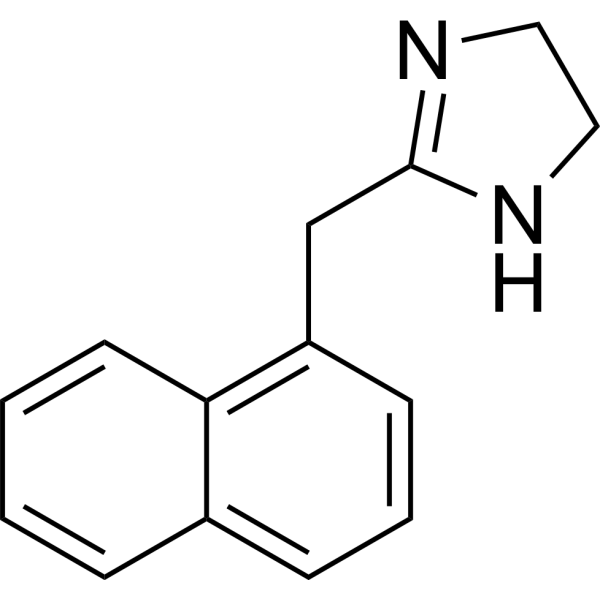
-
- HY-15509
-
|
CNI-1493 free base; CPSI-2364
|
Interleukin Related
TNF Receptor
p38 MAPK
|
Inflammation/Immunology
Cancer
|
|
Semapimod, an inhibitor of proinflammatory cytokine production, can inhibit TNF-α, IL-1β, and IL-6. Semapimod inhibits TLR4 signaling (IC50≈0.3 μM). Semapimod inhibits p38 MAPK and nitric oxide production in macrophages. Semapimod has potential in a variety of inflammatory and autoimmune disorders .
|
-

-
- HY-152213
-
|
|
Epigenetic Reader Domain
|
Inflammation/Immunology
|
|
BET-IN-13 is a potent BET inhibitor with an IC50 value of 1.6 nM. BET-IN-13 reduces LPS-induced TNF-α, IL-1β, IL-6, and NOS2 mRNA expression levels. BET-IN-13 shows anti-inflammatory activity. BET-IN-13 has the potential for the research of acute liver injury .
|
-
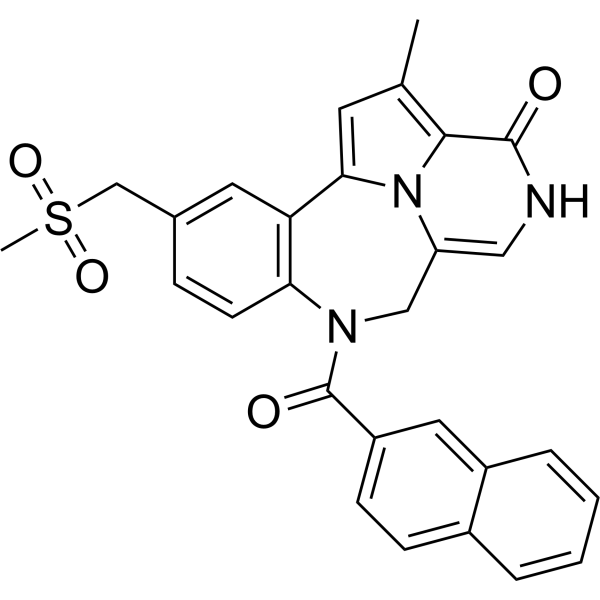
-
- HY-N0569R
-
|
|
NO Synthase
COX
TNF Receptor
Interleukin Related
|
Inflammation/Immunology
|
|
Madecassic acid (Standard) is the analytical standard of Madecassic acid. This product is intended for research and analytical applications. Madecassic acid is isolated from Centella asiatica (Umbelliferae). Madecassic acid has anti-inflammatory properties caused by iNOS, COX-2, TNF-alpha, IL-1beta, and IL-6 inhibition via the downregulation of NF-κB activation in RAW 264.7 macrophage cells .
|
-

-
- HY-111326A
-
-
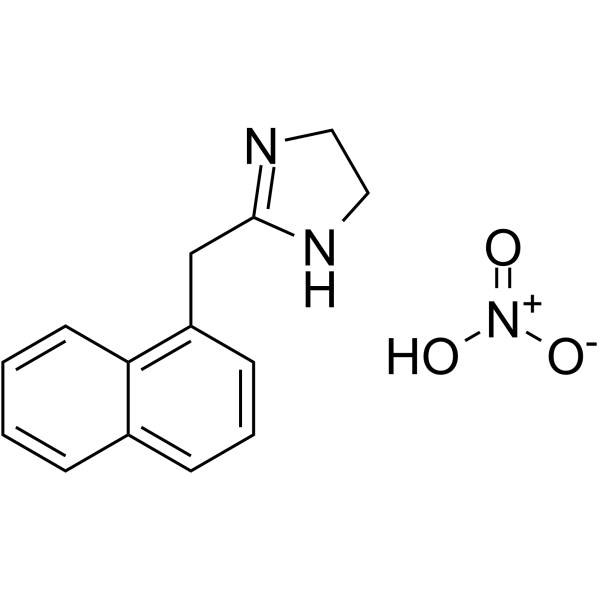
-
- HY-W010201R
-
|
(±)-Citronellol (Standard); (±)-β-Citronellol (Standard)
|
Reactive Oxygen Species
|
Cancer
|
|
Citronellol (Standard) is the analytical standard of Citronellol. This product is intended for research and analytical applications. Citronellol ((±)-Citronellol) is a monoterpene Pelargonium graveolens. Citronellol ((±)-Citronellol) induces necroptosis of cancer cell via up-regulating TNF-α, RIP1/RIP3 activities, down-regulating caspase-3/caspase-8 activities and increasing ROS (reactive oxygen species) accumulation .
|
-
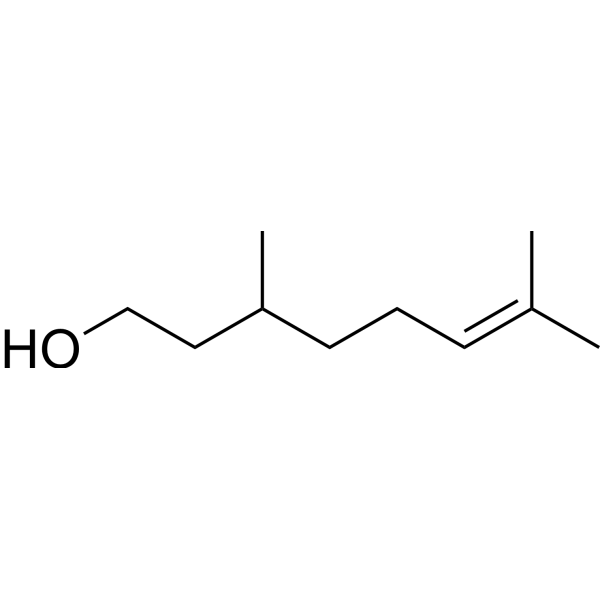
-
- HY-155199
-
|
|
Phosphodiesterase (PDE)
|
Inflammation/Immunology
|
|
PDE1-IN-5 (Compound 10c) is a selective PDE1C inhibitor (IC50: 15 nM). PDE1-IN-5 has anti- inflammatory activity, and inhibits expression of iNOS, TNF-α, IL-1α, IL-1β, and IL-6 induced by LPS. PDE1-IN-5 has anti-inflammatory bowel disease (IBD) effects in the dextran sodium sulfate (DSS)-Induced colitis mice model. PDE1-IN-5 can be used for research of IBD .
|
-
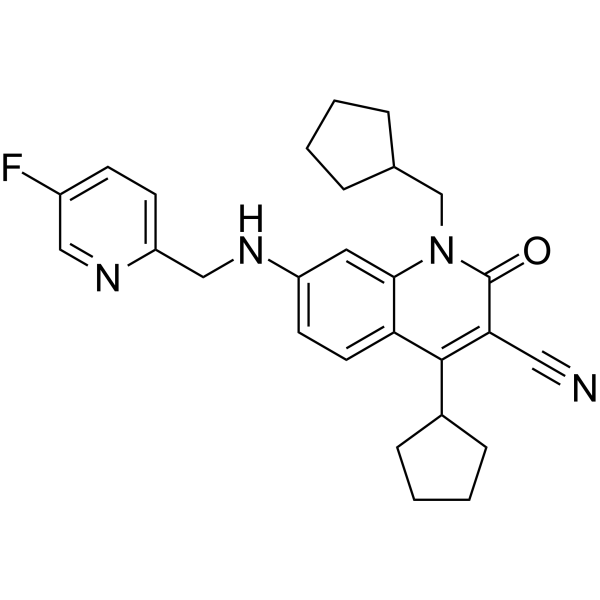
-
- HY-W505984
-
|
KM05073
|
Keap1-Nrf2
|
Inflammation/Immunology
|
|
TPNA10168 is an Nrf-2 activator that activates the Keap1-Nrf2-ARE pathway. TPNA10168 is neuroprotective against oxidative stress-induced damage. TPNA10168 significantly reduces the transcription of inflammatory genes, including TNF-α, IL-1β, IL-6, and iNOS. TPNA10168 can be used in research on anti-inflammatory and neurological diseases .
|
-

-
- HY-N0619
-
|
|
TNF Receptor
Interleukin Related
Tyrosinase
|
Inflammation/Immunology
|
|
Mulberroside A is one of the main bioactive constituent in mulberry (Morus alba L.) . Mulberroside A decreases the expressions of TNF-α, IL-1β, and IL-6 and inhibits the activation of NALP3, caspase-1, and NF-κB and the phosphorylation of ERK, JNK, and p38, exhibiting anti-inflammatory antiapoptotic effects . Mulberroside A shows inhibitory activity against mushroom tyrosinase with an IC50 of 53.6 μM .
|
-

-
- HY-15509A
-
|
CNI-1493; CPSI-2364 tetrahydrochloride
|
TNF Receptor
Interleukin Related
p38 MAPK
|
Inflammation/Immunology
Cancer
|
|
Semapimod tetrahydrochloride (CNI-1493), an inhibitor of proinflammatory cytokine production, can inhibit TNF-α, IL-1β, and IL-6. Semapimod tetrahydrochloride inhibits TLR4 signaling (IC50≈0.3 μM). Semapimod tetrahydrochloride inhibits p38 MAPK and nitric oxide production in macrophages. Semapimod tetrahydrochloride has potential in a variety of inflammatory and autoimmune disorders .
|
-

-
- HY-110246
-
|
|
Others
|
Inflammation/Immunology
|
|
Quin C1 is a highly specific and potent agonist for formyl peptide receptor 2 (FPR2/ALX). Quin-C1 significantly reduces the neutrophil and lymphocyte counts in BALF, diminishes expression of TNF-α, IL-1β, KC, and TGF-β1, and decreases collagen deposition in lung tissue. Quin C1 has the potential for the research of lung injury .
|
-
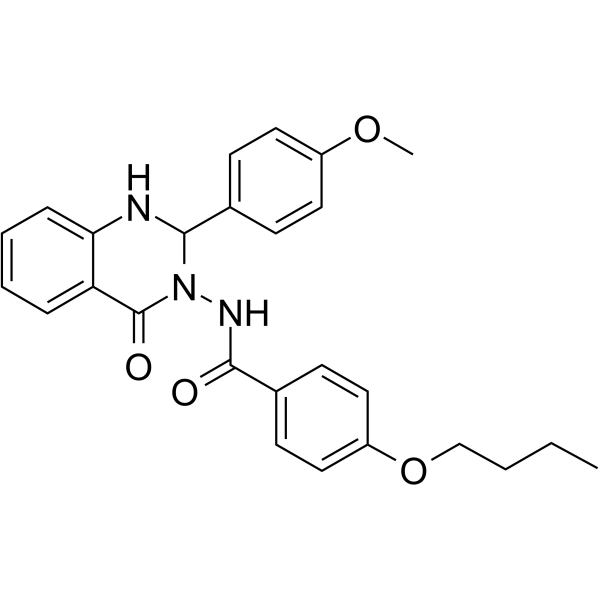
-
- HY-W015879S
-
|
|
Bacterial
Isotope-Labeled Compounds
|
Inflammation/Immunology
|
|
2-Heptanol-d5 is deuterated labeled Citronellol (HY-W010201). Citronellol ((±)-Citronellol) is a monoterpene Pelargonium graveolens. Citronellol ((±)-Citronellol) induces necroptosis of cancer cell via up-regulating TNF-α, RIP1/RIP3 activities, down-regulating caspase-3/caspase-8 activities and increasing ROS (reactive oxygen species) accumulation .
|
-
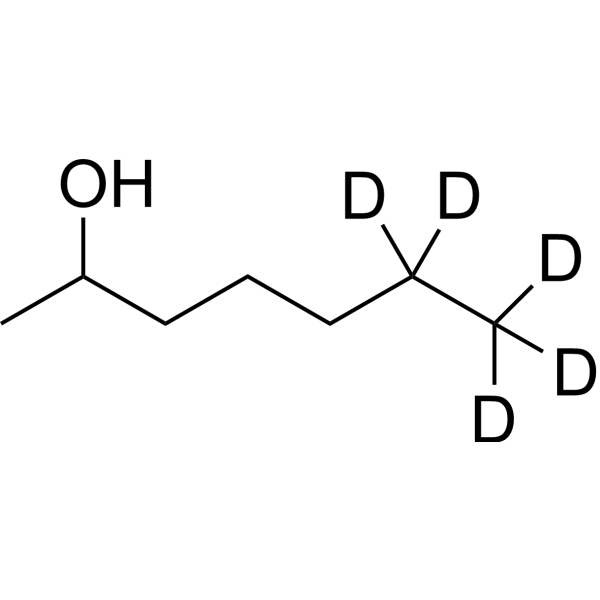
-
- HY-N0619A
-
|
Mulberroside D
|
TNF Receptor
Interleukin Related
Tyrosinase
|
Inflammation/Immunology
|
|
cis-Mulberroside A (Mulberroside D) is the cis-isomer of Mulberroside A. Mulberroside A is one of the main bioactive constituent in mulberry (Morus alba L.) . Mulberroside A decreases the expressions of TNF-α, IL-1β, and IL-6 and inhibits the activation of NALP3, caspase-1, and NF-κB and the phosphorylation of ERK, JNK, and p38, exhibiting anti-inflammatory and anti-apoptotic effects . Mulberroside A shows inhibitory activity against mushroom tyrosinase with an IC50 of 53.6 μM .
|
-
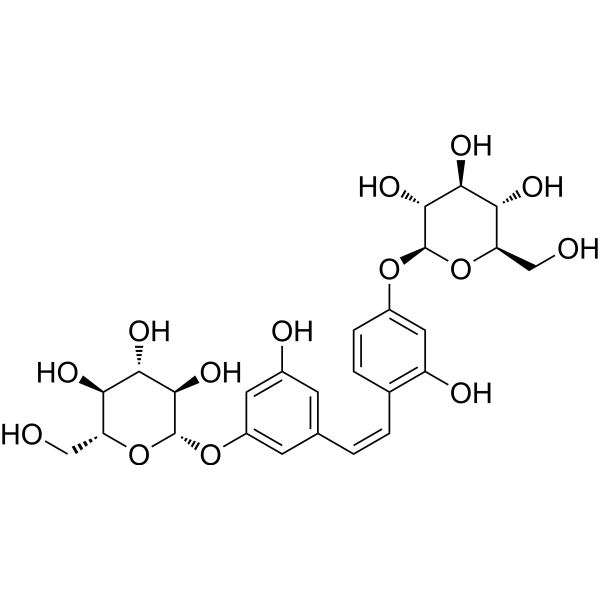
-
- HY-156025
-
|
|
Others
|
Inflammation/Immunology
|
|
HCAR2 agonist 1 (Compound 9n) is a Gi protein-biased allosteric modulator of HCAR2. HCAR2 agonist 1 activates the Gi protein signaling pathway. HCAR2 agonist 1 shows anti-inflammatory effect, and reduces mRNA level of pro-inflammatory cytokine (TNF-α, IL-1β, IL-6, and MCP-1). HCAR2 agonist 1 enhances anti-inflammatory effects of orthosteric agonists in the mouse model of colitis .
|
-
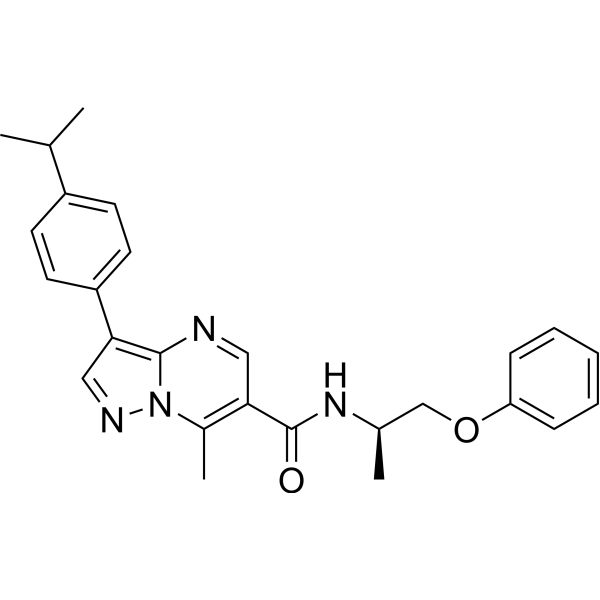
-
- HY-110133
-
JTE-607
1 Publications Verification
|
Interleukin Related
|
Inflammation/Immunology
|
|
JTE-607, a highly selective inflammatory cytokine synthesis inhibitor, protects from endotoxin shock in mice. JTE-607 inhibits inflammatory cytokine production, including TNF-α, IL-1β, IL-6, IL-8 and IL-10, from LPS-stimulated human PBMCs, with IC50s of 11, 5.9, 8.8, 7.3 and 9.1 nM, respectively . Cleavage and Polyadenylation Specificity Factor 3 (CPSF3) is the target of JTE-607 .
|
-
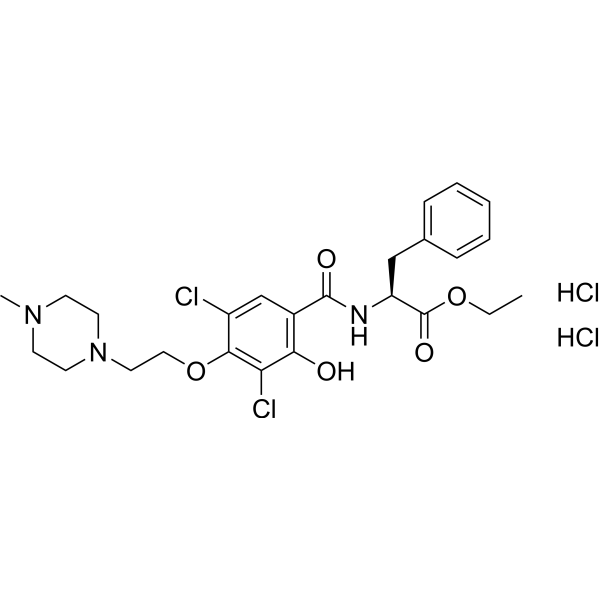
-
- HY-147924
-
|
|
Keap1-Nrf2
NO Synthase
ROS Kinase
|
Inflammation/Immunology
|
|
Keap1-Nrf2-IN-11 (compound 6k) is a Keap1-Nrf2 inhibitor with KD2 value of 0.21 nM. Keap1-Nrf2-IN-11 inhibits the productions of ROS and NO and the expression of TNF-α. Keap1-Nrf2-IN-11 relieves inflammations by increasing the Nrf2 nuclear translocation. Keap1-Nrf2-IN-11 can be used for anti-inflammatory research .
|
-

-
- HY-19744
-
T6167923
Maximum Cited Publications
11 Publications Verification
|
|
|
|
T6167923 is a selective inhibitor of MyD88-dependent signaling pathways. T6167923 directly binds to Toll/IL1 receptor (TIR) domain of MyD88 and disrupts MyD88 homodimeric formation. T6167923 inhibits NF-κB driven Staphylococcus enterotoxin AP (SEAP) activity, and improves anti-inflammatory activity with IC50s of 2.7 μM, 2.9 μM, 2.66 μM and 2.66 μM for IFN-γ, IL-1β, IL-6 and TNF-α, respectively .
|
-
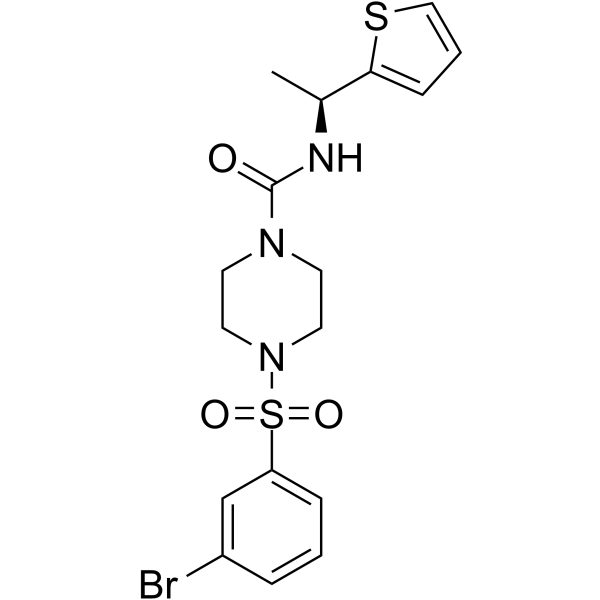
-
- HY-N0281
-
|
7,8-DihydroxycoumarIN
|
EGFR
PKA
PKC
Autophagy
Apoptosis
AMPK
Akt
mTOR
Reactive Oxygen Species
Caspase
Bcl-2 Family
PARP
Parasite
|
Inflammation/Immunology
Cancer
|
|
Daphnetin (7,8-dihydroxycoumarin), one coumarin derivative can be found in plants of the Genus Daphne, is a potent, oral active protein kinase inhibitor, with IC50s of 7.67 μM, 9.33 μM and 25.01 μM for EGFR, PKA and PKC in vitro, respectively. Daphnetin triggers ROS-induced cell apoptosis and induces cytoprotective autophagy by modulating the AMPK/Akt/mTOR pathway. Daphnetin has anti-inflammation activitity and inhibits TNF-α, IL-1ß, ROS, and MDA production. Daphnetin has schizontocidal activity against malaria parasites. Daphnetin can be used for rheumatoid arthritis , cancer and anti-malarian research .
|
-

-
- HY-155759
-
|
|
Others
|
Inflammation/Immunology
Cancer
|
|
HMGB1-IN-2 (compound 15) is an inhibitor of highly conserved nuclear protein (HMGB1), showing NO inhibitory effect with IC50 value of 20.2 μM in RAW264.7 cells. HMGB1-IN-2 (30 μM) decreases the level of IL-1 β, TNF-α, caspase-1 p20, inhibits the phosphorylation of NF-κB p65, exhibits anti-apoptotic activity. HMGB1-IN-2 (15 mg/kg; ip) relives kidney injury in septic acute kidney injury mouse. HMGB1-IN-2 inhibits Huh7 cells and A549 cells with IC50s of 77.0 μM, and 82.0 μM, respectively .
|
-

| Cat. No. |
Product Name |
Target |
Research Area |
| Cat. No. |
Product Name |
Category |
Target |
Chemical Structure |
-
- HY-N0358
-
-

-
- HY-N9315
-
-

-
- HY-126114
-
-

-
- HY-N3552
-
-

-
- HY-126414
-
-

-
- HY-N0569
-
-

-
- HY-W010201
-
-

-
- HY-N6927
-
-

-
- HY-N12042
-
-

-
- HY-N0569R
-
-

-
- HY-W010201R
-
-

-
- HY-N0619
-
-

-
- HY-N0619A
-
-

-
- HY-N0281
-
|
7,8-DihydroxycoumarIN
|
Classification of Application Fields
Daphne
Thymelaeaceae
Source classification
Coumarins
Phenols
Polyphenols
Phenylpropanoids
Plants
Disease Research Fields
Cancer
|
EGFR
PKA
PKC
Autophagy
Apoptosis
AMPK
Akt
mTOR
Reactive Oxygen Species
Caspase
Bcl-2 Family
PARP
Parasite
|
|
Daphnetin (7,8-dihydroxycoumarin), one coumarin derivative can be found in plants of the Genus Daphne, is a potent, oral active protein kinase inhibitor, with IC50s of 7.67 μM, 9.33 μM and 25.01 μM for EGFR, PKA and PKC in vitro, respectively. Daphnetin triggers ROS-induced cell apoptosis and induces cytoprotective autophagy by modulating the AMPK/Akt/mTOR pathway. Daphnetin has anti-inflammation activitity and inhibits TNF-α, IL-1ß, ROS, and MDA production. Daphnetin has schizontocidal activity against malaria parasites. Daphnetin can be used for rheumatoid arthritis , cancer and anti-malarian research .
|
-

| Cat. No. |
Product Name |
Chemical Structure |
-
- HY-W015879S
-
|
|
|
2-Heptanol-d5 is deuterated labeled Citronellol (HY-W010201). Citronellol ((±)-Citronellol) is a monoterpene Pelargonium graveolens. Citronellol ((±)-Citronellol) induces necroptosis of cancer cell via up-regulating TNF-α, RIP1/RIP3 activities, down-regulating caspase-3/caspase-8 activities and increasing ROS (reactive oxygen species) accumulation .
|
-

Your information is safe with us. * Required Fields.
Inquiry Information
- Product Name:
- Cat. No.:
- Quantity:
- MCE Japan Authorized Agent:
















































